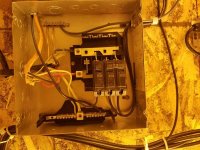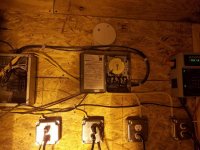nightridda
Member
Aside from creating a tremendous fire hazard, you WILL get caught.
Rives; I think a quoted the wrong message but regaurdless I got an urgent urgent question
Question. Sub panel to timer.. nuetral wire ? None ? When I go back into the 2nd sub panel from the timer nuetral none ? I have the two hots and grounds hooked up.. I'm just lost at nuetral..




